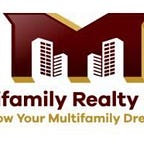Single-Family vs. Multifamily Properties
Two of the most common real estate investment properties that people pursue are single-family homes and multi-family homes.
Single-family homes are properties that consist of one property unit and that houses only one family. The property can be a condo, a house, or a townhouse. On the other hand, multi-family homes are real estate properties that have more than one unit, which can ultimately house more than one family; the property can be an apartment building, a duplex, or triplex, to name a few.
What is the difference between the two real estate investments, and which one should investors go for? Before determining which is the best choice — we go through the differences and similarities between the two investment choices.
Similarities between Single Family Homes and Multi-Family Homes
Investing in either of these rental property types will require an investor to pay high-interest rates and make a down payment of at least 20%, which could be a hefty price for some investors. However, this can change if the purpose of buying this property is for residential purposes for the owner and not as a real estate investment. Banks are stricter on investment properties because they are riskier.
Single-family homes and multi-family homes both have a good return on investment long term. Both types of income properties are able to generate more than 1% of the cost of the capital per month, which will lead to positive cash flow. Taking a mortgage loan to fund a rental property type can be beneficial for investors; through rental income, real estate investors can pay off mortgage expenses with ease and quickly.
Investing in either of these income property types will give the investors' tax breaks such as tax deductions in terms of mortgage and property tax. This can be very helpful to reduce expenses.
Now that we’ve looked at the similarities, here is a look at the differences between Single Family Homes and Multi-Family Homes
Single Family Homes
Affordability
One of the main advantages of single-family homes. Single-family rental properties have a lower cost for investment than multi-family properties. The total cost is not only affected by the price of the property but by other factors as well. Insurance rates for single-family homes are lower less because the insurance covers only one housing unit. Utility expenses are usually non-existent in a single-family property rental since most rental agreements require tenants to pay most or all the utility expenses.
Appreciation is Higher
Due to more demand and focus on single-family homes, these tend to appreciate more than multi-family homes. Financial loaners usually see the difference between both when valuing them. Multi-family properties are value based on the conditions of the real estate property and the rental income they make. The evaluation of single-family properties is purely based on supply and demand factors, and demand is not lacking at all.
Better Tenants
Single-family properties also have way fewer turnovers than multifamily properties. Having one property to manage makes it easier for first-time investors in the real estate market. Having the daunting task to manage a multi-family home with little real estate experience can be a bit tricky to navigate through.
More Exit Strategies
If a real estate investor decides to sell a single-family property, they will have more chances of selling it quickly and for more money than multi-family properties. This creates a better exit strategy for investors who no longer want to invest or manage properties. Single-family homes are in demand by many investors, especially for families looking to buy a home or a lease-to-own option.
Multi-Family Homes
Higher Rental Income
With multifamily properties, investors can purchase a rental property with multiple units, each one of them generating a monthly rental income. Compare that to single-family homes where an investor has only one source of rental income from one tenant. This makes multi-family properties a safer investment in terms of having constant cash flow from various sources.
Fewer Vacancy Issues
The possibility of vacancies in multi-family homes is not absent; however, it is less costly and less frequent than vacancies in single-family homes. If one of the units is vacant for a month or two, the landlord will still be making rental income from the other units that are being rented.
Controlling the Value
With a multi-family property, a property owner will have the chance to have the fate of the income property in his/her own hands. The fact that these types of real estate properties are valued based on the rental income they generate makes real estate investors more motivated to get the maximum revenue from their property. Single-family homes are subject to economic factors in their valuation process.
Conclusion
Single-family homes and multi-family homes can be a very profitable real estate investment. It comes down to which strategy or type of investment an owner wants to be a part of: Investing more money in a risky yet more profitable investment like a multi-family property or choosing the more stable long-term investment of a single-family home. It all depends on preferences, involvement level expected, and budget that each investor wants.
